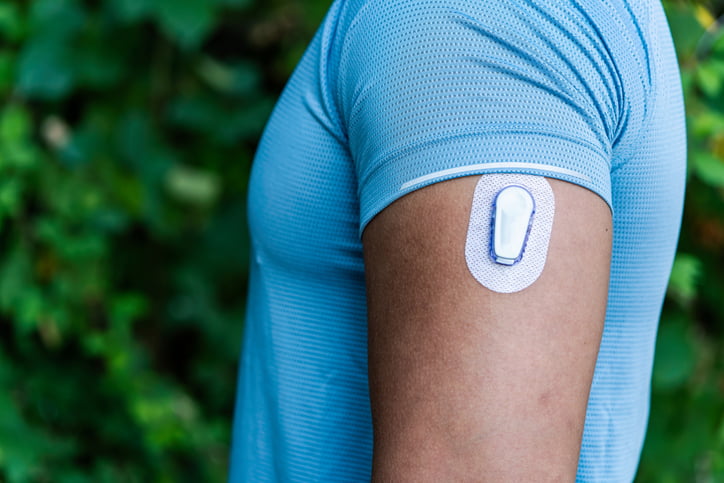As we’ve reported recently, svexa’s Chief Science Officer Filip Larsen and his research team are continually pushing forward the boundaries of human performance science, including work identifying muscle fiber types, proving the value of adaptive training, or detecting overtraining. In recent interviews, Filip and colleague Emil Blomberg discuss one of the latest training developments – the use of Continuous Glucose Monitoring (CGM) to track and optimize athlete ‘fuelling’.
In their recent article “Olympic athetes turn to diabetes tech in pursuit of medals”, Reuters describe how Abbott introduced a CGM product for amateur and elite sports users without diabetes in Europe as early as 2020, and has sponsored Kenyan marathon great Eliud Kipchoge and his team since 2021. Top athletes and their support staff have been using CGMs to optimise calorie intake and workout intensity as they prepare for sport events. As Filip comments, “a big guesswork for endurance athletes has always been: am I training hard enough or am I training too hard? It seems with CGMs, we have a better understanding.” It’s important to note that there is little validated science yet on how to optimise an athlete’s routines using CGMs. Filip adds “Most researchers cannot give you the exact answers. In five years, we will know 10 times as much as we do now.”
In a related article “, Reuters talk about a few of the elite athletes currently using CGM. Australian swimmer and Olympic gold medallist Chelsea Hodges says CGMs helped her remedy bouts of extreme exhaustion during longer training sessions. Dutch marathoner Abdi Nageeye is using CGM in his pursuit of the “effortless run”, and svexa’s own elite steeplechaser Emil Blomberg is using CGM to avoid overtraining as he competes for a spot in Paris this summer.
There’s no doubt that the use of CGMs will continue to be a growing area of exploration for athletes in the field, and for physiological scientists in the lab. It’s an area that Filip, Emil, Lina Nilsson, Olof Södergård and others continue to focus on. As always, svexa will do its part to drive forward both the research and application both for elite and recreational athletes.

In addition to his role as svexa’s Chief Science Officer, Dr FIlip Larsen is Associate Professor, Swedish School of Sports & Health Sciences, and a Physiologist for Swedish National Orienteering Team.

Emil is a Software Analyst at svexa, a leading developer of our endurance training product Ellida. He has a Masters Degree in Sports Technology from KTH Royal Institute of Technology, and is a Swedish international competitor in the 3,000m steeplechase. He competed in the Tokyo Olympics, and is currently pursuing selection for Paris 2024.



